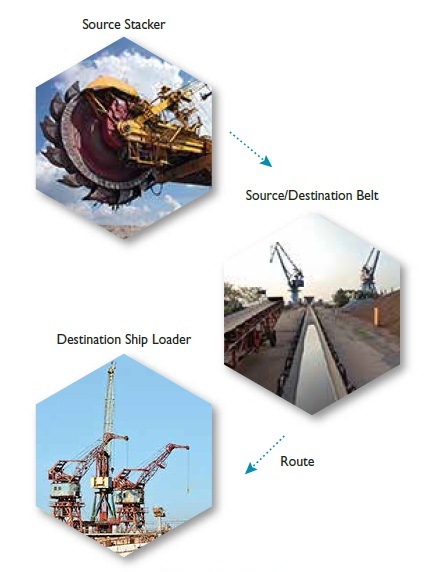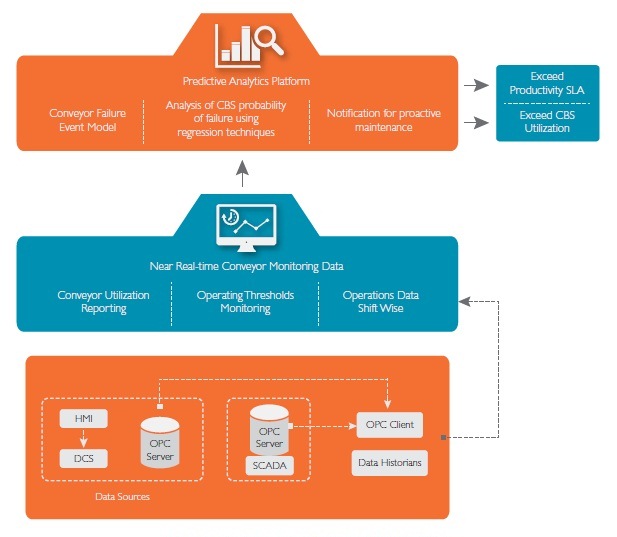Predictive Failure Model for Conveyor Belt Systems
Equipment maintenance and repair is a big drain on mining operations. When examined, this cost can be largely boiled down to Conveyor Belt System (CBS) failure. Aside from huge cost impact, CBS failure results in lowered production output. Organizations that predict CBS failures can insulate bottom lines from the impact.
Sandipan Chakraborti, Senior Architect at Wipro’s Energy, Natural Resources & Utilities business, answers questions related to the problem and provides insights into managing it.
Q: What are the estimated costs of poor CBSs?
A: Conveyor belts are the most efficient methods of transporting large loads. In mining operations, CBSs hold a special place in production and are used across operations (see Figure 1). Typically, a failed conveying system carrying 1,000 to 3,500 tons/hour of coal, can, according to studies, result in losses of around AU$600 to AU$1,800 a minute. Clearly, unplanned maintenance can bring down loss of productivity.
CBS transports ore from bulk material handlers to intermediate belts and finally load the ore to destination belt and destination equipment such as ship loaders

Figure 1: Material Handling Process
Q: What are the fundamental elements of a system than can predict CBS failure?
A: Material handling using CBS requires the following operational components: Source ID of Stackers/Reclaimers, Source Belt IDs, Route Type ID (Loading/Unloading/Blending), Route ID, Destination Belt ID and Ship Loader at port.
DCS have the responsibility of interfacing with and controlling equipment and applications across the operation. Therefore, a DCS can monitor and capture operational data on CBSs. The data is then pushed to Historians (see Figure 2). This comprises the basic resource to analyze the health of a CBS and predict failure.

Figure 2: Conceptual Architecture of CBS Predictiv
Q: Could you elaborate on the key elements of a successful predictive model?
A: A successful predictive model would rely on:
Capturing CBS-related data across operations
Here, the reference values for the predictors and the sample size for the observations are important to accurate forecasting.
Q: Which are the important predictive failure models?
A: There are two models that we should consider. The Belt Wear Out Rate Model and the Cox Proportional Hazards Regression Model.
In the Belt Wear Out Rate Model conveyor belts under observation may be grouped by duty types and studied for two options–
(a) Time-based Observation (b) Throughput-based Observation.
In Time-based Observation, the predictors being analyzed are observed over weeks and their impact on linear wear out rate of belt is denoted as the linear belt thickness wear out rate per week.
In Throughput-based Observation, the belts are observed for utilization and downtime. This is represented as the thickness wear out per million tons of ore.
It is seen from the predictive model analysis on CBS that key variables such as conveyor duty types and cycle time play a vital role in belt wear out rates.
The Cox Proportional Hazards Regression Model is based on the rationale that the instantaneous probability of failure of a machine is initially zero and increases cumulatively over time with usage. The hazards function describes the relative likelihood of a failure event occurring at time (t) denoted by f(t) conditional on the equipment having operated up to time (t).
The best prediction results are obtained when data provided by 2 CBS manufacturers don’t cross. There are no covariates influencing the relative likelihood of failure other than the explanatory predictors such as Belt Tension, Tonnage, Belt Type and Bearing Temp.